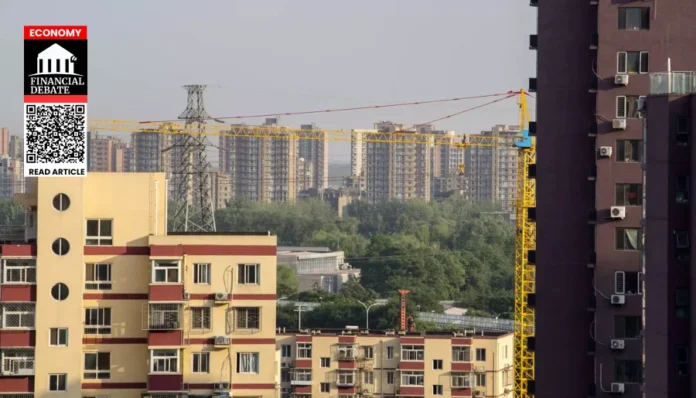- Monetary Easing Measures: PBOC cuts mortgage rates and down payments to ease financial strain and boost the real estate market.
- Market Response and Investor Sentiment: Property stocks surged, but analysts remain cautious about the sustainability of the recovery.
- Challenges and Structural Issues: Structural problems persist, requiring deeper reforms for a lasting recovery.
On a pivotal Tuesday, the Chinese real estate sector saw a remarkable surge in stock prices, primarily triggered by a series of monetary easing initiatives proposed by key financial regulators. In a high-stakes press conference, Pan Gongsheng, the Governor of the People’s Bank of China (PBOC), unveiled a comprehensive strategy aimed at alleviating the financial strain experienced by millions of families, while simultaneously sparking a turnaround in the country’s beleaguered property market. The measures included a notable reduction in existing mortgage interest rates by an average of 0.5 percentage points and a decrease in the down-payment requirement for second home purchases from 25% to 15%.
This development represents a significant shift, as it unifies the down-payment levels for both first and second homes for the first time. Consequently, the PBOC anticipates that this adjustment will lessen household interest payments on mortgages by a staggering 150 billion yuan annually, equivalent to approximately $21.25 billion. The immediate market response was telling; when Hong Kong’s markets opened following the announcement, the Hang Seng Mainland Properties Index experienced a notable rise of as much as 5%.
Market Dynamics and Reactions
The gains in Hong Kong-listed property stocks reflected broader market optimism. Major real estate development companies such as China Resources Land, Longfor Group Holdings, and China Overseas Land & Investment witnessed significant stock price increases, with individual gains climbing as high as 5.41%. However, while the boost in stock prices may indicate a momentary rally, it raises critical questions about the long-term sustainability of this recovery. Previous policy measures have had minimal impact on revitalizing the real estate sector, with property-related investments plummeting over 10% in the first eight months of the year compared to the preceding year.
Furthermore, the PBOC’s additional directive encouraging commercial banks to refine their mortgage loan pricing structures brings forth another layer of complexity. While these frameworks aim to enhance overall affordability, they may not inherently stimulate demand for new housing projects. Analysts, including William Wu from Daiwa Capital Markets, have expressed skepticism regarding the efficacy of rate cuts on existing loans, emphasizing that these moves might fail to rekindle enthusiasm within the housing market and may inadvertently decelerate the PBOC’s momentum concerning future loan prime rate reductions.
The Road Ahead for Policymakers and Developers
In contrast, Bruce Pang, chief economist and head of research for Greater China at JLL, shares a somewhat tempered outlook on the situation. He underscores the pressing necessity for comprehensive measures to stabilize the housing market and bolster confidence among developers. Pang argues for an urgent rollout of supportive policies across various fronts, stressing the requirement for “effective and efficient support to developers to boost property investment and construction activities.” His insights evoke a broader concern regarding the interplay between regulatory measures and actual market performance.
Moreover, reports from Bloomberg suggest that further initiatives may be on the horizon, including discussions around allowing homeowners to renegotiate their mortgage terms with current lenders before January next year. Such measures could provide much-needed flexibility for homeowners, enabling them to refinance with different banks after a prolonged period of restrictions.
The Chinese government’s latest efforts to usher in a recovery for the real estate sector are both ambitious and fraught with challenges. As stakeholders observe the immediate uptick in stock prices and the proposed regulatory changes, the broader implications for the market’s stability remain uncertain. While these initiatives may temporarily ease financial burdens for households and restore some investor confidence, analysts warn that without sustained and targeted efforts, the path to a lasting recovery may remain elusive.
The balancing act that policymakers face in revitalizing this crucial sector while maintaining overall economic stability exemplifies the complexities of China’s current economic landscape. As the situation unfolds, stakeholders across the spectrum will be keenly watching the effectiveness of these policies and their impact on the trajectory of the real estate market in the months and years to come.
